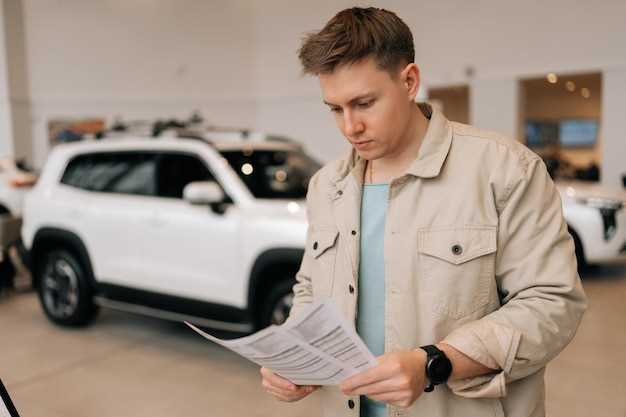
Determining the right pricing strategy for your collector car is crucial in maximizing its value and ensuring a successful sale. The market for classic and collectible vehicles is highly dynamic, influenced by a variety of factors such as demand, rarity, and condition. Therefore, understanding these elements is essential for setting a price that reflects your car’s true worth.
In this guide, we will explore various methodologies and approaches for assessing the value of your collector car. From engaging in comparative market analysis to assessing historical appreciation rates, we will provide insights into how to arrive at a competitive and enticing price point. Setting the right price not only attracts potential buyers but also enhances the perception of your vehicle within the collector community.
Additionally, we will discuss common pitfalls to avoid in the pricing process, such as overvaluation based on emotional attachment or undervaluation due to lack of knowledge about the collector car market. By arming yourself with the right tools and information, you can confidently navigate the complexities of pricing your collector car, ultimately leading to a rewarding sale.
Analyzing Market Trends for Classic Cars
Understanding market trends is essential for setting the optimal price for your classic car. By examining current market conditions, you can make informed decisions that reflect the true value of your vehicle.
Here are several key factors to consider when analyzing market trends for classic cars:
- Popularity of Makes and Models: Certain brands and models tend to carry more value over time. Research which classic cars are currently in high demand and those that have appreciated in value.
- Condition and Restoration: The condition of a classic car significantly influences its market value. Analyze trends in restoration and how they affect pricing. Well-maintained and restored vehicles often attract higher bids.
- Auction Results: Attend classic car auctions or follow their results online. Auction prices can serve as a barometer for current market trends and shifts in buyer sentiment.
- Market Demographics: Identify the primary audience for classic cars. Younger collectors might gravitate towards different models than traditional enthusiasts, impacting market values.
- Online Sales Platforms: Websites and marketplaces dedicated to classic cars provide valuable insights into asking prices, negotiation strategies, and buyer interest levels. Regularly check listings to gauge current market conditions.
In addition, conducting a comparative analysis of similar vehicles can help establish a baseline for pricing. Look for:
- Sales Comps: Collect data on recent sales of similar models to determine price ranges.
- Historical Value Trends: Review historical data to see how values have fluctuated over time, which can help in forecasting future trends.
- Geographic Factors: Location can affect demand and value. Investigate how classic car values differ between regions.
By systematically analyzing these market trends, you will be better equipped to set a price that reflects the true value of your classic car, attracting buyers while maximizing your investment.
Evaluating the Condition and Rarity of Your Vehicle

When it comes to setting the optimal price for your classic collector car, understanding its condition and rarity is crucial. These factors significantly impact the overall value of the vehicle, determining not only how much you might sell it for but also how attractive it is to potential buyers.
Condition serves as a primary indicator of a vehicle’s quality. Assess your car’s exterior and interior meticulously, noting any rust, dents, or wear. A well-maintained classic car often commands a higher price, with pristine examples fetching considerable premiums. Things to consider include the integrity of the engine, transmission, and suspension system, as well as the state of the upholstery and dashboard. Documentation of past maintenance and restoration work can bolster your claims about the car’s condition and justify a higher asking price.
Another important aspect is rarity. The less common a vehicle is, the more desirable it typically becomes among collectors. Research production numbers, limited editions, or unique features that distinguish your car from others. Even slight variations in color or model specifications can significantly enhance a car’s allure and value. Collaborating with classic car valuation services or joining collector networks can provide invaluable insights into how your vehicle stacks up against similar models in terms of rarity.
In conclusion, a thorough evaluation of both condition and rarity will provide a solid foundation for determining the true value of your classic car. By taking the time to assess these aspects critically, you can set a price that reflects the vehicle’s worth while attracting serious buyers.
Utilizing Online Tools and Resources for Accurate Valuation

Determining the right pricing for your collector car can be challenging, yet leveraging online tools and resources can simplify the valuation process. Numerous websites specialize in classic car appraisals, offering insights into current market trends and historical sales data. Utilizing these resources allows sellers to better understand the value of their vehicle based on make, model, year, condition, and other factors.
One popular platform is Hemmings, which provides extensive listings along with auction results that reflect real-world pricing dynamics. By analyzing these figures, collectors can gauge how much similar vehicles have recently sold for, helping them set a competitive price. Additionally, NADA Guides and Kelley Blue Book offer tools specifically designed for classic and collector cars, giving users an estimated value based on detailed specifications.
Online forums and communities focused on classic cars also serve as valuable resources. Engaging with fellow enthusiasts can yield insights and anecdotal evidence regarding pricing trends and what buyers are willing to pay. These discussions can reveal nuances specific to certain models or regions that may not be captured in standard market reports.
Another essential aspect of accurate valuation is utilizing auction sites like Bring a Trailer and RM Sotheby’s, which often feature collector cars alongside transparent bidding histories. Observing how particular cars perform in an auction setting can provide a real-time assessment of their value, based on buyer interest and willingness to pay. This data is invaluable when trying to understand not just what a car is worth but the demand for it within the collector community.
Finally, considering social media platforms can enhance pricing strategies. Marketplaces on platforms such as Facebook and Instagram often highlight current listings and sales, offering further context for price comparisons. By combining insights from these tools and resources, sellers can arrive at a more informed and accurate valuation for their collector car, significantly impacting the success of their sale.


